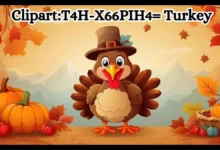Minecraft (2009) Game Icons: How to Design Perfect Banners

Minecraft, the blocky sandbox game that has captivated millions worldwide, is not just known for its gameplay but also for its evolving visual identity. One of the most fascinating aspects of this evolution is its game icons. These small yet significant graphical elements provide a window into the game’s development and cultural impact. This article explores the journey of Minecraft’s game icons from their inception in 2009 to their current state, illustrating how these icons reflect both the game’s evolution and its influence across various platforms.
The Genesis of Minecraft Icons
Early Minecraft Icons (2009)
In 2009, Minecraft’s initial game icon was simple and reflective of its alpha stage. Featuring a pixelated depiction of a blocky landscape, this early icon was designed with minimalistic charm, emphasizing the game’s retro pixel art style. It was a perfect representation of the game’s core aesthetic, showcasing the simplistic yet captivating visual elements that defined Minecraft’s early years.
The icon was not just a symbol but an extension of Minecraft’s charm, illustrating the raw, untamed creativity of the game’s early development. As the game evolved, so did the icon, transitioning from a basic design to one that would represent a burgeoning phenomenon in gaming.

Icon Design Philosophy
Minecraft’s icon design has always been rooted in its core philosophy of simplicity and creativity. The early icons, characterized by their pixel art, mirrored the game’s retro-inspired graphics and accessible design. This approach not only made the game visually appealing but also resonated with a broad audience, from casual gamers to hardcore enthusiasts.
Community feedback played a crucial role in refining these icons. As players interacted with the game, their responses helped shape the visual representation of Minecraft, ensuring that the icons remained relevant and reflective of the game’s evolving features and aesthetics.
Evolution Through the Versions
Minecraft Alpha and Beta Icons
During the alpha phase, Minecraft icons began to see subtle yet significant changes. The designs were refined to better capture the game’s expanding world and features. The transition from alpha to beta brought about more detailed icons, showcasing improvements in the game’s graphics and overall design. These changes laid the groundwork for the more polished icons that would emerge with the official release.
The beta phase marked a period of experimentation and refinement, with icons evolving to incorporate new elements and updates. This iterative process not only enhanced the visual appeal of the game but also set the stage for the iconic designs that would define Minecraft’s official release.
The Official Release and Beyond
With the official release of Minecraft, the game icons underwent a major redesign. The updated icons featured more detailed and vibrant graphics, reflecting the game’s growth and the introduction of new features. These changes were instrumental in establishing a distinct visual identity for Minecraft, differentiating it from other games and solidifying its place in the gaming landscape.
As the game continued to evolve, so did its icons. Major updates and expansions brought about new icon designs, each reflecting the latest additions to the game. This ongoing evolution ensured that the icons remained relevant and continued to capture the essence of Minecraft’s ever-expanding universe.
Icon Variations Across Platforms
Desktop vs. Mobile Icons
One of the most noticeable differences in Minecraft’s icons is between its desktop and mobile versions. Desktop icons, designed for PC and console, often feature more detailed graphics due to the platform’s higher resolution capabilities. In contrast, mobile icons are simplified to accommodate smaller screens and touch interfaces, focusing on clarity and ease of use.
These platform-specific adjustments ensure that the icons are not only visually appealing but also functional across different devices. The design considerations for each platform highlight the importance of user experience in shaping the visual elements of the game.
Special Editions and Custom Icons
Minecraft’s iconography extends beyond its main game to include special editions and custom designs. Special editions, such as Dungeons or Education Edition, feature unique icons that reflect their specific themes and functionalities. Additionally, the community has played a significant role in creating custom icons, adding a personal touch to the game’s visual identity.
Custom icons created by fans often showcase creativity and innovation, contributing to the game’s rich visual culture. These icons provide a glimpse into the diverse ways players interact with and interpret the Minecraft universe.
The Cultural Impact of Minecraft Icons
Recognition and Branding
icons have become a powerful symbol of the game’s brand. Their recognition extends beyond the gaming community, influencing popular culture and media. The distinctive blocky design and vibrant colors have helped establish Minecraft as a global phenomenon, making its icons instantly recognizable to fans and casual observers alike.
The evolution of these icons reflects the game’s journey from a niche indie title to a mainstream success, showcasing how visual elements can play a crucial role in branding and cultural impact.
Iconography in Merchandise and Media
Minecraft icons have also made their way into various forms of merchandise and media. From toys and clothing to marketing campaigns, these icons have become a key element of Minecraft’s commercial success. Their presence in merchandise highlights their role in shaping the game’s visual identity and reaching a broader audience.
The representation of icons in media further cements their status as cultural icons, illustrating the game’s influence beyond the realm of digital entertainment.
Conclusion
The evolution of Minecraft’s game icons offers a fascinating insight into the game’s development and cultural impact. From its humble beginnings in 2009 to its current status as a global phenomenon, the journey of these icons mirrors growth and the ever-changing landscape of gaming. As the game continues to evolve, it will be intriguing to see how its icons adapt and reflect future developments.




